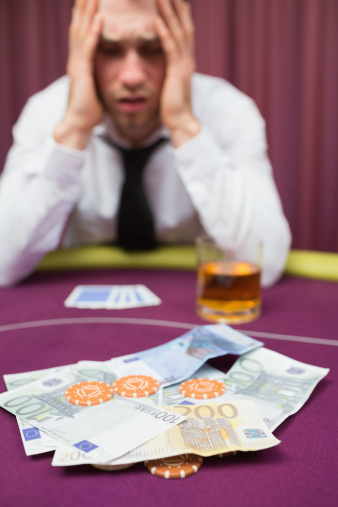Gambling disorder is a form of addiction that manifests as a collection of dysfunctional gambling-related urges, thoughts and behaviors. Current scientific evidence indicates that people affected by the disorder have an unusual inability to stop themselves from acting impulsively while participating in gambling or considering participating in gambling.
According to the results of a study published in October 2013 in the International Journal of Mental Health and Addiction, a relatively simple change in the design of electronic gambling machines could largely offset the chances for impulsive gambling behavior, and thereby substantially reduce the risks for gambling disorder.
Understanding Gambling Disorder
Gambling disorder is a behavioral addiction triggered by repeated participation in gambling in circumstances that detract from emotional well-being and significantly interfere with the ability to carry out everyday social or interpersonal routines. In a manner that mirrors the effects of repeated, excessive involvement in the use of drugs or alcohol, this type of gambling fosters addiction by gradually changing the brain’s chemical environment and priming it to expect further gambling participation. Officially, gambling disorder belongs to a category of non-substance-related mental illnesses called addictive disorders. In turn, addictive disorders belong to a larger category called substance-related and addictive disorders, which also includes addiction or abuse of drugs or alcohol. While a number of normally harmless behaviors may trigger addiction-like symptoms, gambling disorder is the only formally diagnosable addictive disorder.
The Role of Impulsive Behavior
Impulsive behavior, also known as impulsivity, is behavior that takes place with an unusually low level of conscious consideration or forethought. In some cases, impulsive people merely act with less forethought than their non-impulsive peers. In other cases, they act so rapidly that forethought is either minimal or essentially non-existent. In a study published in 2012 in the journal PLOS ONE, an international research team assessed the effects of impulsivity in people diagnosed with gambling disorder. These researchers found that two forms of impulsive behavior help trigger and sustain gambling disorder in any affected individual. One of these forms involves an unusual inability to delay gaining a reward from one’s actions, while the other involves an unusual inability to prevent the body from springing into action. The authors of the study concluded that an inability to control the body’s immediate actions is especially important in gambling disorder’s development.
Changes in Game Design
In the study published in the International Journal of Mental Health and Addiction, researchers from Great Britain’s Swansea University and City University London looked at the ways in which a simple change in the design of electronic gambling games could potentially help restrain the impulsive behavior that supports the onset and continuation of gambling disorder. As part of their efforts, they asked 42 adults affected by problem gambling to play a computer-based card game that paid cash for winning bets and took cash for losing bets. Thirty-nine adults not affected by problem gambling also played the game. On some occasions, the card game allowed participants to place their bets without pausing between individual decisions. On other occasions, the game imposed a five-second delay between each bet. Using win/loss totals and the number of bets placed as indicators, the researchers compared the gambling behaviors of the two groups in both gaming conditions.
The researchers drew several important conclusions from their experiments. First, when the problem gamblers were allowed to make rapid bets without pausing between each action, they consistently played for longer amounts of time and lost more money than their study counterparts unaffected by problem gambling. However, when the problem gamblers were required to wait for five seconds between each bet, they didn’t play for longer amounts of time than their study counterparts. Just as importantly, they did not lose more money than their study counterparts while gambling.
Significance
Based on their results, the authors of the study published in the International Journal of Mental Health and Addiction concluded that a simple delay between betting cycles offsets the impulsivity problems associated with gambling disorder. In line with this finding, they believe that the manufacturers of electronic and computer-based gambling devices could contribute to a decline in gambling disorder risks by programming such a delay into their devices. Time will tell if gambling device manufacturers translate this kind of research in real-world changes or continue to produce games that inadvertently support the development of serious gambling problems.

